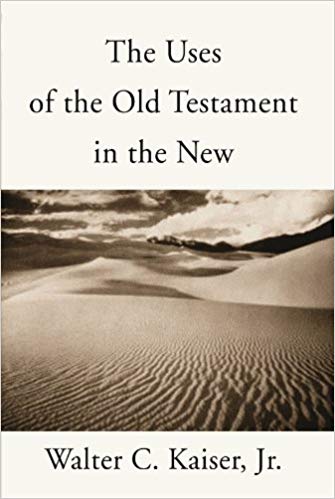A Brief Book Summary from Books At a Glance
By Benjamin Montoya
Introduction
With this important book, Walter C. Kaiser Jr. outlines his understanding of how to understand the uses of the Old Testament in the New. He covers all the essential topics and texts to demonstrate that his position is indeed a defensible position. It is indeed important to understand the Old Testament texts in their context and how the New Testament uses them, and Kaiser shows us one way of how to do just that.
Table of Contents:
Chapter 1 Introduction to the Uses of the Old Testament in the New
Part 1 The Apologetic Use of the Old Testament in the New
Chapter 2 Foreseeing and Predicting the Resurrection
Chapter 3 Respecting the Old Testament Context
Part 2 The Prophet Use of the Old Testament in the New
Chapter 4 Witnessing and Expecting the Arrival of Elijah
Chapter 5 Participating In and Expecting the Day of the Lord
Part 3 The Typological Use of the Old Testament in the New
Chapter 6 Understanding the Old Testament as “Types of Us”
Chapter 7 Abolishing the Old Order and Establishing the New
Part 4 The Theological Use of the Old Testament in the New
Chapter 8 Experiencing the Old Testament “Rest” of God
Chapter 9 Including the Gentiles in the Plan of God
Part 5 The Practical Use of the Old Testament in the New
Chapter 10 Applying the Principles of the Civil Law
Chapter 11 Applying the Principles of the Ceremonial Law
Conclusion
Book Summary
Chapter 1: Introduction to the Uses of the Old Testament in the New
To understand the uses of the OT in the NT, we need to begin by getting our bearings. First, the NT refers to the OT in at least two ways. There are direct citations and allusions. Depending on precisely how someone counts the direct citations, there are approximately 300 of them in the NT. Given that the NT is about 1/3 the size of the OT, that is a substantial amount. The amount of allusions is perhaps just as high if not higher. Thus, these references merit our careful attention.
Second, there are different kinds of direct, or formal, citations. Some of them begin by “It is written” to quote a single verse whereas others may use the same beginning but draw from several different verses. In the modern-day, we usually think of a citation as from just one source, but we need not force our own understanding back into the text if that is not what is happening.
Third, the NT cites and alludes to the OT, but the NT uses different translations of the OT to do so. If we recall the original context of the writing of the NT, we need to remember that different versions were in use during that time—Hebrew, Aramaic, and Greek, at the very least. If, then, the wording of the citations does not match word-for-word what we see in our English translations, then that is why.
Fourth, there are different classes of OT citations. Several sets of classes have been proposed to understand the various kinds of OT citations because they do not seem to be all alike. For example, Jack Weir offers five:
- The literal historical method is such that the NT cites the OT according to its original meaning.
- The pesher method uses the OT text according to the NT needs and setting apart from the original meaning of the OT text.
- The typological method focuses on the similarities between types and antitypes, e.g., Jesus is the much greater temple the OT temple pointed forward to.
- The allegorical method utilizes the OT text only to pick up on the imagery used to make a different point in the NT.
- The theological method understands the NT theological motifs against the background of the OT.
Fifth, instead of considering the different classes, some have generated other theories—that the citations were part of a group of citations used against the Jews as a testimony or an apologetic use. But, this point is difficult to maintain if pesher and allegory were used.
What, then, shall we make of these different views? Are there five classes of citations? Does the NT cite the OT in ways that contradict the meaning of the OT? How are we supposed to understand the nature of the original meaning? It is to these kinds of questions that the subsequent chapters will turn.
Part 1: The Apologetic Use of the Old Testament in the New
Chapter 2: Foreseeing and Predicting the Resurrection
To understand the uses of the OT in the NT, we need to consider some hermeneutical matters. First, there is an “absolute necessity of establishing a single sense to any writing, much less to Scripture.” When we think of what a text can mean, we need to keep this point in mind to understand the NT uses of the OT. If we depart from this understanding, then we open the door to all kinds of biblical and theological interpretive issues—the text can mean whatever we want it to mean at that point. There are many who draw from Modern Rationalism that would argue otherwise. They would argue that there can be different kinds of meaning, even psychological. But, if we want to be faithful interpreters of God’s Word, we have to stick to this one meaning approach.
[To continue reading this summary, please see below....]The remainder of this article is premium content. Become a member to continue reading.
Already have an account? Sign In
